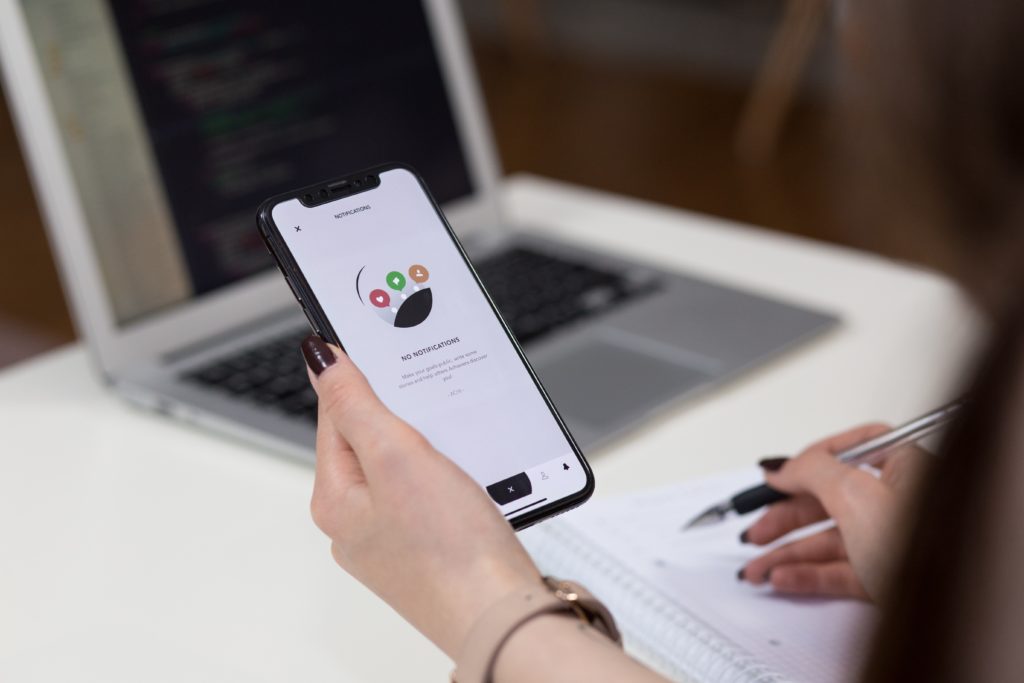WE HAVE A LOT TO SAY
IT SOFTWARE APPS CLOUD NEWS EVENTS
So You Want to Build an App? Here Are 7 Steps of Software Development with an MSP
With more time on our hands and more anxiety in the world, many of us are now waking up with ideas for digital products and services that can improve businesses and lives, or just make them more fun. Did you decide or even just contemplate building an app? It may be easier and faster than you think, even if you know less about code than your grandma.
One of the easiest ways to bring your app idea to live is with the help of a Managed Service Provider (MSP). “But I’m getting dozens of software development offers from India and other countries in my spam folder every week and on LinkedIn, why an MSP,” you may ask.
The answer is simple. A outsources software developer will write code to put your idea into the hands of users. However, this is only one piece of the app development puzzle: to launch a successful app, you need to figure out scalable architecture, UI and UX, data organization and storage, publishing, security, and so much more. An MSP with decades of experience creating apps and setting up and maintaining IT infrastructures will have the know-how and insight into best practices, effectively saving your thousands on flopped launches, dirty code, and data breaches.
Building an app is an iterative process, but it all starts with these X steps.
Idea
Before building an app, you must first decide what the app will be used for. This is the ideation stage of the app development process, and it is more important than you may realize. You may already have an idea of what you need the app to do, but is it detailed enough to inform and guide all the following stages of app development?
For instance, you may want to create an app that helps small businesses connect directly with the communities they serve. Great! But not enough to start coding just yet. First, you need to figure out what the user experience will be for both sides of the marketplace, will there be a personal cabinet? Save/favorite function? Social features? How will the orders be fulfilled and processed? What the onboarding will be like for the users and businesses?
While you don’t need to have final answers to these questions just yet and the MSP you are working on can help you answer them correctly, having an in-depth brainstorming session with yourself or your co-founders to outline non-negotiables and the most important requirements for your app as the first step is a must.
If you do not have an idea for an app yet but still want to build an app, there are a variety of methods to come up with ideas. Ideas can be generated through brainstorming, customer or employee interviews and feedback, or market research. Once you have your idea ready, it is time to move to the next step of the process.
Interview
The interview stage of the process is an especially important part of the app development cycle. It is during this step that the MSP must pick your brain to determine what you need and want from the app (have those dreams and requirements ready!) The interview stage is also where the MSP will begin to bring their expertise to the table to ensure that the app is built in a manner that is user-friendly and secure.
During the interview, you will describe to your MSP partner how you would like the app to look and function. Your MSP can offer suggestions about the underlying infrastructure, user interface and user experience of the app, data storage and security, and much more based on their expert knowledge. They can also point you in the right direction about the minimum viable product, or MVP, which means figuring out which features to prioritize and develop to start showing your future app to the users as soon as possible. This is essentially a list of the must-have features for Day 1 of the app rollout. It is imperative to have a great relationship with your MSP so that you can trust and rely on their suggestions.
Architecture
The next step in building your app is deciding on an architecture. Will this be a cloud-based mobile app, or will it be a desktop app that is hosted on-prem? Which programming language will you use? The purpose of the app and how users will interact with it will help guide you to the right architecture solution. This is another area where you can rely heavily on the expertise of your MSP to point you in the right direction.
Be aware that the architecture you decide on can greatly affect the cost of development and maintenance, as well as have long-term implications for growth and scalability. Keep security considerations front and center will help you avoid crises in the future, too. Some people are hesitant to store personal information in the cloud, which also requires different levels of security for different types of data, so the data that your app will be using can influence which architecture you should select. Once you decide on an architecture, then it is time to start building.
Mockups and Prototypes
The first thing your MSP may create for you are mockups of how the app will look once developed. These are essentially images of the app and screens within the app with no functionality, but they provide a visual representation of how the app will appear once completed. This can allow you to easily make any changes to the appearance since no real coding has taken place yet. A good call will be to put these mockups in front of your potential users (you may cringe at this internally but the earlier you start involving the end-user and using their insights to guide your development, to more successful your app will be!)
Another option is to skip mockups altogether and start right away with interactive prototypes that are still graphics that require no code but allow you and your testers to click on buttons and interact with the prototype as they would with the app. Again, put it in front of the users as early as possible—you will hear things you haven’t even considered before!
MVP Development
After you are happy with mockups and interactive prototypes, it is time to create the MVP of your app. These are working, test versions of the app that have the core functionality of your app and are optimized for efficient and enjoyable use but may not have all the bells in whistles or the full range of functions you imagined during your ideation stage.
At this point, all the previous brainstorming, prototyping, and testing will have informed and validated the best approach to development. Building an app with an MSP, you don’t need to worry about the details; you will get the MVP app prototype on your timeline and can start testing yet again!
Testing
Even though we recommend testing your hypotheses and assumptions on users throughout the development process, the type of testing also known as debugging is typically one of the last phases of app development.
As the name implies, this is the stage where you work with your MSP to thoroughly test the functionality of your app. This stage is often called the Quality Assurance stage or simply QA, meaning that its goal is to ensure all elements are working properly, data flows where intended, and the user experience reflects the initial concept.
QA is usually done during beta testing by a specific focus group; alternatively, if you validated your idea enough during previous stages, rolling out to a limited cohort (a particular lower priority market or group of target users) may be a good idea. Thorough testing allows you to identify bugs and other issues with the app before performing a full rollout of the application. An app that has not been thoroughly tested is highly likely to have issues, and those issues will lead to bad user experience and a lower adoption rate of your software.
Launch
You wanted to build an app, and now you have built it, tested it, debugged it, and are happy with it. Your trusted MSP is here to take you all through the full-scale launch ensuring the backend of your app functions seamlessly as expected. It is time for marketing, more user testing and interviews, and planning the next phase of development (what are some of the features that didn’t make it into the MVP? Something your testers thought would be nice to have?)
AS you see, working with an MSP is a great way to bring your app idea to life on a budget with fewer mistakes. An MSP has the knowledge and expertise necessary to guide you in the right direction when making decisions concerning the backend, functionality, and usability of your app. There are several steps to the development process, and it is important to work through each step as you navigate the process. This will lead to a well-designed, well-built app that is a breeze to use and that customers love. Give 3nom a call today to get a special quote on your app development.




